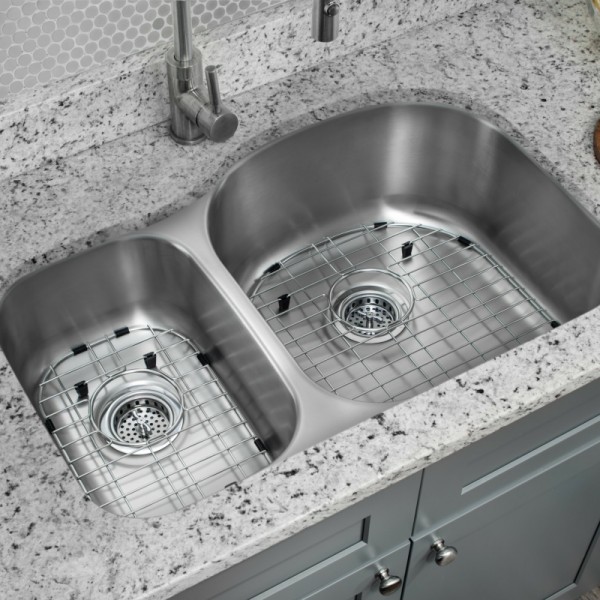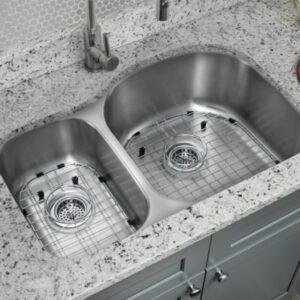The sink is an essential component of any kitchen or bathroom, and its design plays a crucial role in maintaining proper hygiene and cleanliness. A poorly designed sink can lead to a buildup of bacteria and mold, making it difficult to keep the area clean and safe. In this article, we will discuss the impact of sink design on hygiene and cleanliness and provide some tips for selecting the right sink for your needs.
Material
The material of your sink can have a significant impact on its cleanliness. Stainless steel sinks are popular because they are easy to clean and maintain. They are also resistant to bacteria growth, making them a hygienic choice for any kitchen. Porcelain or ceramic sinks are another option, but they can be more challenging to clean and may require more frequent maintenance to prevent staining and chipping.

Size
The size of your sink is also an important consideration. A larger sink will make it easier to clean larger pots and pans, but it may also take up more space and require more water to fill. A smaller sink may be more appropriate for a smaller kitchen, but it may be challenging to clean larger items properly.
Shape
The shape of your sink can also impact its cleanliness. A sink with rounded edges is easier to clean and prevents debris from getting trapped in corners. However, a sink with sharp corners or edges can make cleaning more challenging and increase the risk of bacteria buildup.

Faucet
The faucet is another critical component of the sink that can impact its cleanliness. A faucet with a high arc allows for more clearance, making it easier to clean larger items. However, a high arc faucet may also splash water more, leading to more water spots and stains. A low arc faucet is easier to clean and less likely to splash, but it may not be suitable for larger items.

Drain
The drain is another essential part of the sink that can impact its cleanliness. A sink with a garbage disposal can make it easier to dispose of food waste, but it can also lead to clogs and require more maintenance. A sink without a garbage disposal may require more frequent cleaning to prevent clogs and bacteria buildup.
Installation
The installation of your sink is also crucial for maintaining proper hygiene and cleanliness. A top-mounted sink is easier to install but can lead to debris getting trapped between the sink and countertop. An under-mounted sink is more challenging to install but provides a seamless look and prevents debris buildup.
In conclusion, the design of your sink plays a crucial role in maintaining proper hygiene and cleanliness. When selecting a sink, consider the material, size, shape, faucet, drain, and installation method to ensure that it meets your needs and is easy to clean and maintain. A well-designed sink will not only improve the functionality of your kitchen or bathroom but also help keep the area safe and healthy for you and your family.


